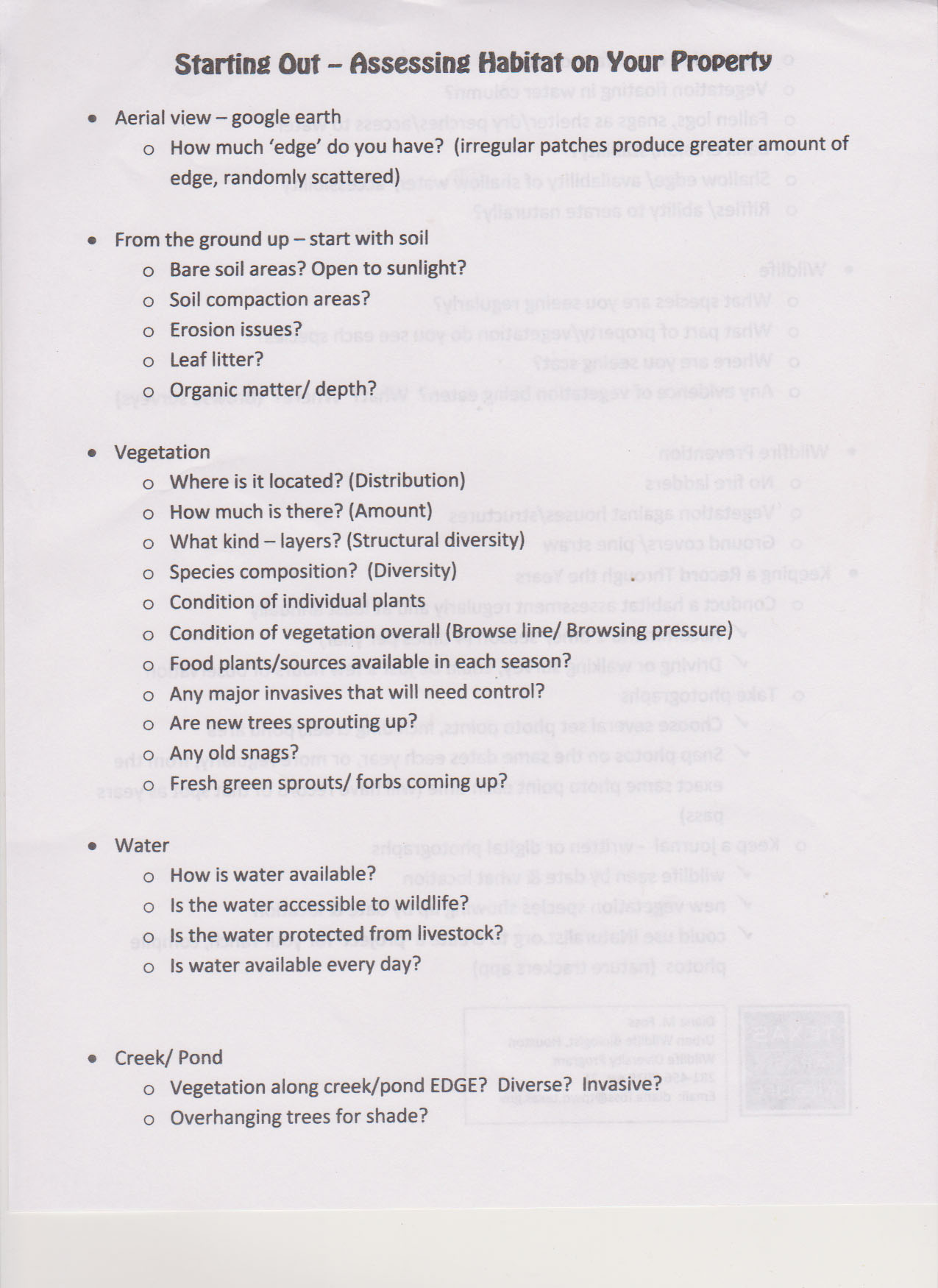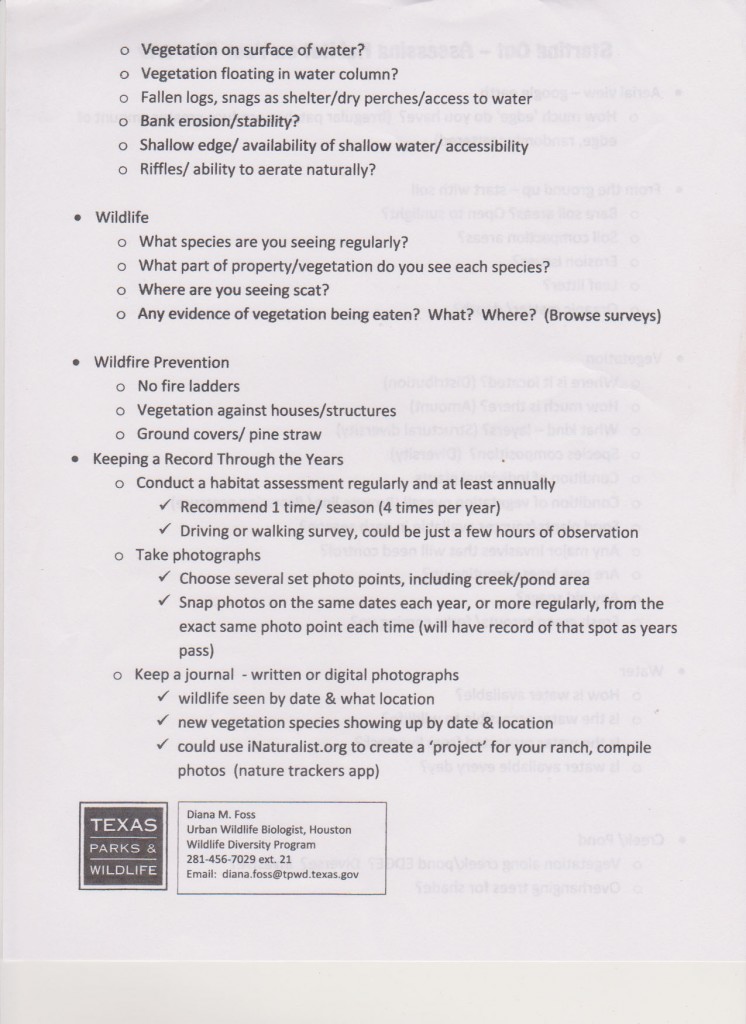We are working on nature identification pages for the plants and animals at Indian Creek, but in the meantime, here are some great online resources to get you started.
The Department of Ecosystem Science and Management at Texas A & M University has a virtual herbarium. There you can browse all the plants from their books, Plants of Texas Rangelands, Toxic Plants of Texas, and Know Your Grasses. There is also a search page to help you identify plants — you click on your region, type of plant, or flower color, and then search further within those results by clicking on more characteristics. A list of possible plants comes up, and when you hover your cursor over the names, the plant’s picture comes up, so you can very quickly see if that is your plant or not.
Happy identifying!


